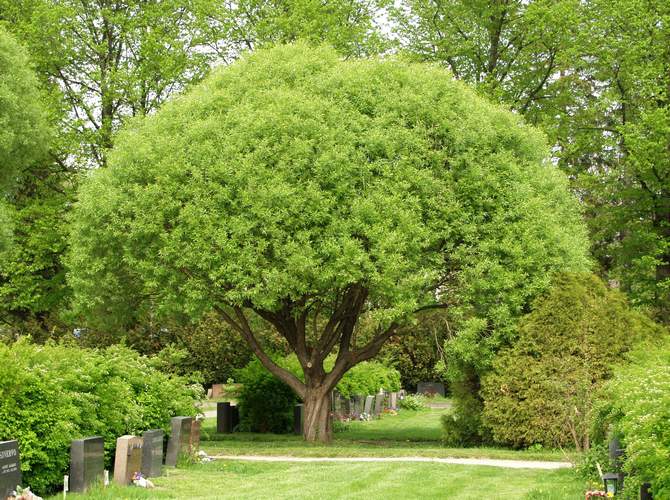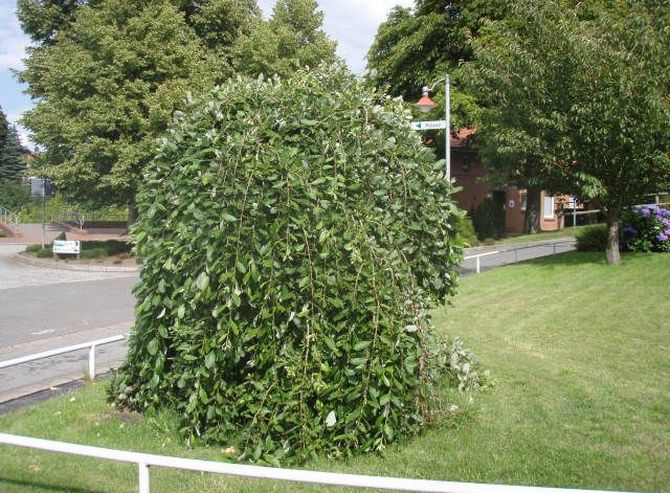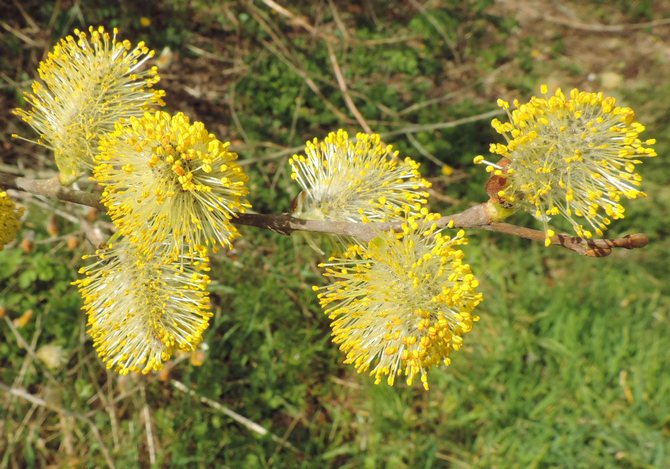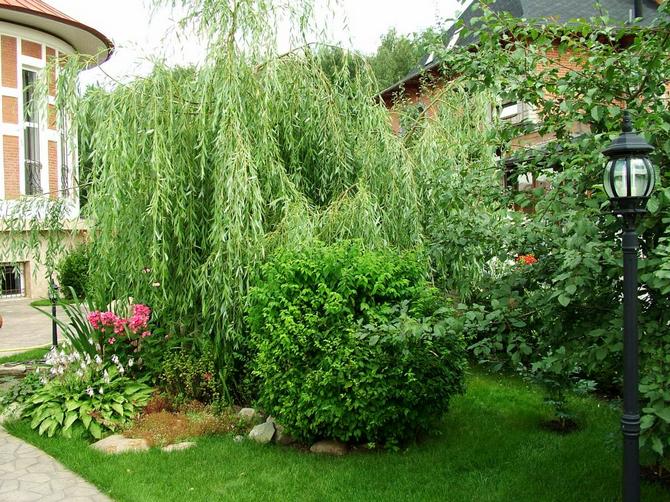It belongs to the willow family and reaches a height of about 10 meters, with a trunk diameter of 0.75 meters. It has a smooth, air-reddening wood covered with a gray-green bark. Its thick, spreading branches are adorned with long, elliptical, dark green leaves. This tree begins to bloom in April, before the leaves open, and the flowering period lasts 10-13 days. It blooms with female and male flowers shaped like earrings. Fruiting in May in seeds that are easily carried by the wind over long distances.
Planting and leaving
Goat willow can be planted in any substrate – it is not demanding on the soil, although it feels better on light, fresh loams. Has a shallow root system that is very sensitive to moisture. Loves well-lit areas without drafts. It tolerates frosty winters well, but the youngest shoots can suffer from severe frosts..
Caring for it consists in removing unnecessary shoots under the grafting sites, as well as timely pruning to control the height of growth.
This species reproduces with the help of cuttings, which take root very well, especially if they are placed in a container with water before planting. The cuttings are planted in soil, pre-mixed with compost. The planting site is well watered, then watering is done 2-3 times a week.
Useful uses of goat willow
Willow is grown on a trunk as a decorative element of a garden plot. It is easy to care for and takes up little space. Most importantly, it requires constant pruning to maintain a consistent shape. For growing on a trunk, a certain type is used – “Pendula”. The trunk of the tree itself is used as a trunk. The result is a small, but beautiful tree with hanging branches..
Its bark contains many tannins used in leather processing. Tanning extracts isolated from willow bark are used to treat thin leather, from which gloves are made, and morocco is also made. This tree is an excellent honey plant and is highly prized by beekeepers. Bees from this tree process everything: inflorescences, honeydew, sticky bud secretions, turning them honey and propolis.
This tree is especially widely used in folk medicine, as a sedative, antipyretic, choleretic, wound healing agent. A decoction of the bark of this tree is used for diseases of the spleen and kidneys, for colds and rheumatism. For inflammation of the oral cavity, a decoction of goat willow bark is used, it can also be taken orally to normalize the work of the sweat glands.
From ancient times to this day, willow wood has been used in construction, for the manufacture of furniture and various handicrafts. Willow rods are especially widely used, which are very flexible and quite strong. The rods are used to make baskets of various shapes and purposes. In rural areas it is impossible to find a farm that does not have a “koshul” woven from willow twigs. This basket is used when harvesting potatoes. Baskets and baskets for picking berries and mushrooms are made from peeled rods, candy boxes, bread boxes and other household utensils are made. They differ from plastic (modern) ones in a more natural, natural appearance and environmental friendliness, they are able to paint any table and any home. For crafts, one or two-year-old willow shoots are used..
Varieties
Goat willow Pendula. Deciduous tree with a weeping tent-like crown up to three meters wide and up to 2-3 meters high. Can grow in the shade, but light-loving, on soils of any moisture, up to 30 years. It is used for decoration of parks and gardens. It is frost-resistant, but it is advisable to cover for the winter. The most crucial moment of leaving is pruning. If, in the first years of life, the formation of the crown is started, then, in the future, it will be very difficult to correct its growth. Looks good next to perennials, dwarf conifers.
Goat willow weeping. A very beautiful and interesting tree with flexible, weeping shoots. These shoots form a spherical crown, which is lowered to the very ground. In the spring, during the flowering period, the crown is densely allied with fluffy earrings.
Goat willow refers to dwarf forms and has a low trunk with a spherical crown formed by unusual shoots directed downward. The fast-growing willow form is used in planting park and garden plots to create hedges.
Goat willow Kilmarnock. Standard plant, not high (up to 1.5 meters) with long branches hanging down to the ground. They begin to bloom in April with numerous yellowish catkins, emitting a pleasant aroma. This tree should be grown in a well-lit area and in any type of soil. Moreover, this tree is wind and frost-resistant..
White willow (Cremesina) – a very popular species abroad, which has a bright scarlet bark of young shoots. Its variety of white willow (Vitellina) has young shoots of a golden yellow hue. These plants are constantly pruned so that they only have annual shoots. This makes it possible to admire the bright branches in early spring against the background of snow. Despite the fact that these are large plants, it is possible to grow them on a small area, having correctly formed the crown in advance. To form a crown in the form of a ball, the trunk is cut off at the required height. Alternatively, cut a tree near the ground and form a ball “lying on the ground”.
Willow of babylon one of the most beautiful willow trees and is the best decoration for parks in the south of Russia. Her homeland is North and Central China. Prefers river valleys with sandy or calcareous soils. In the extreme south of Russia, it does not shed leaves almost all year round (from February to January). In January it sheds its leaves, and at the end of February the leaves bloom. At this time, the Babylonian willow surpasses many evergreen trees in scenic beauty..




